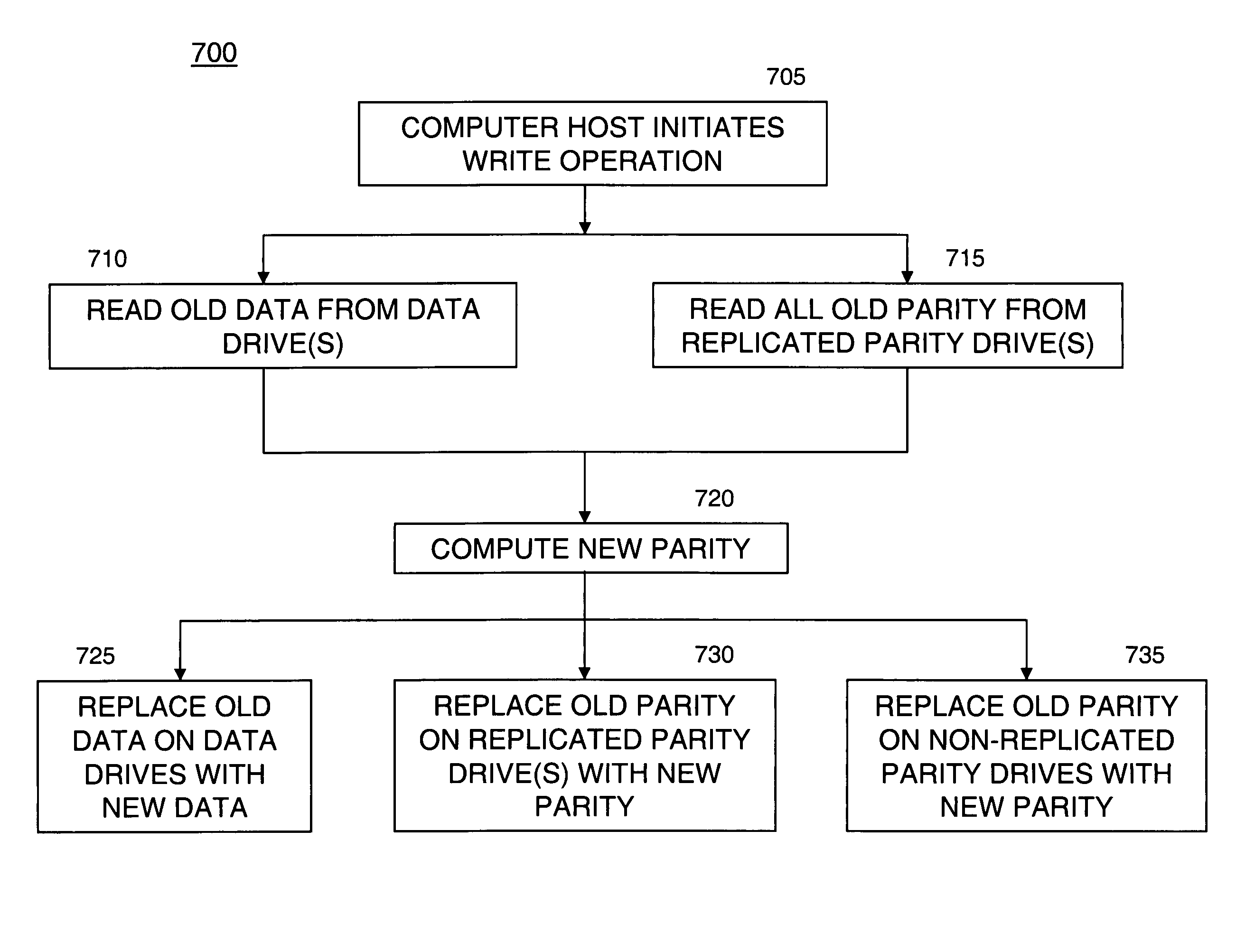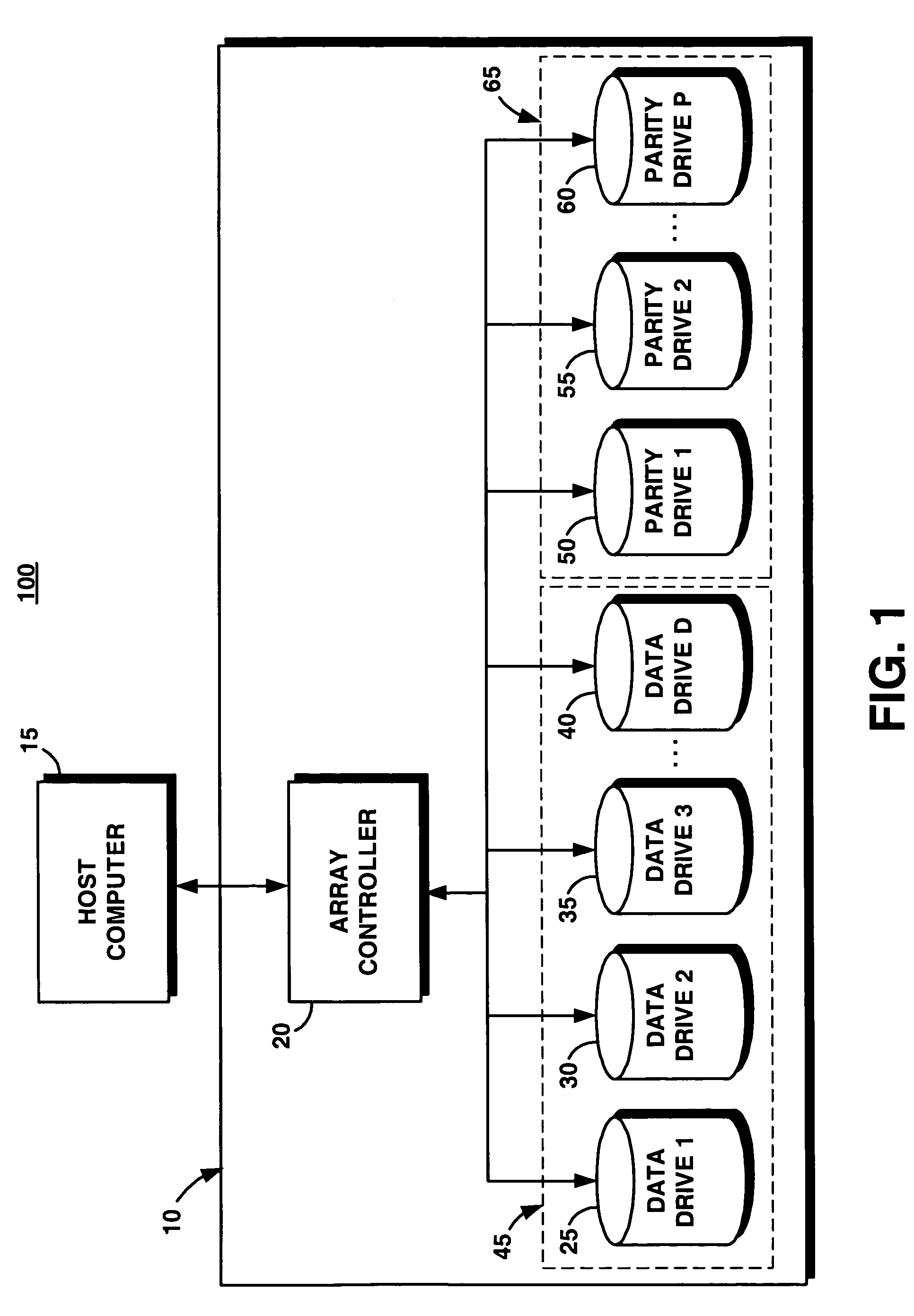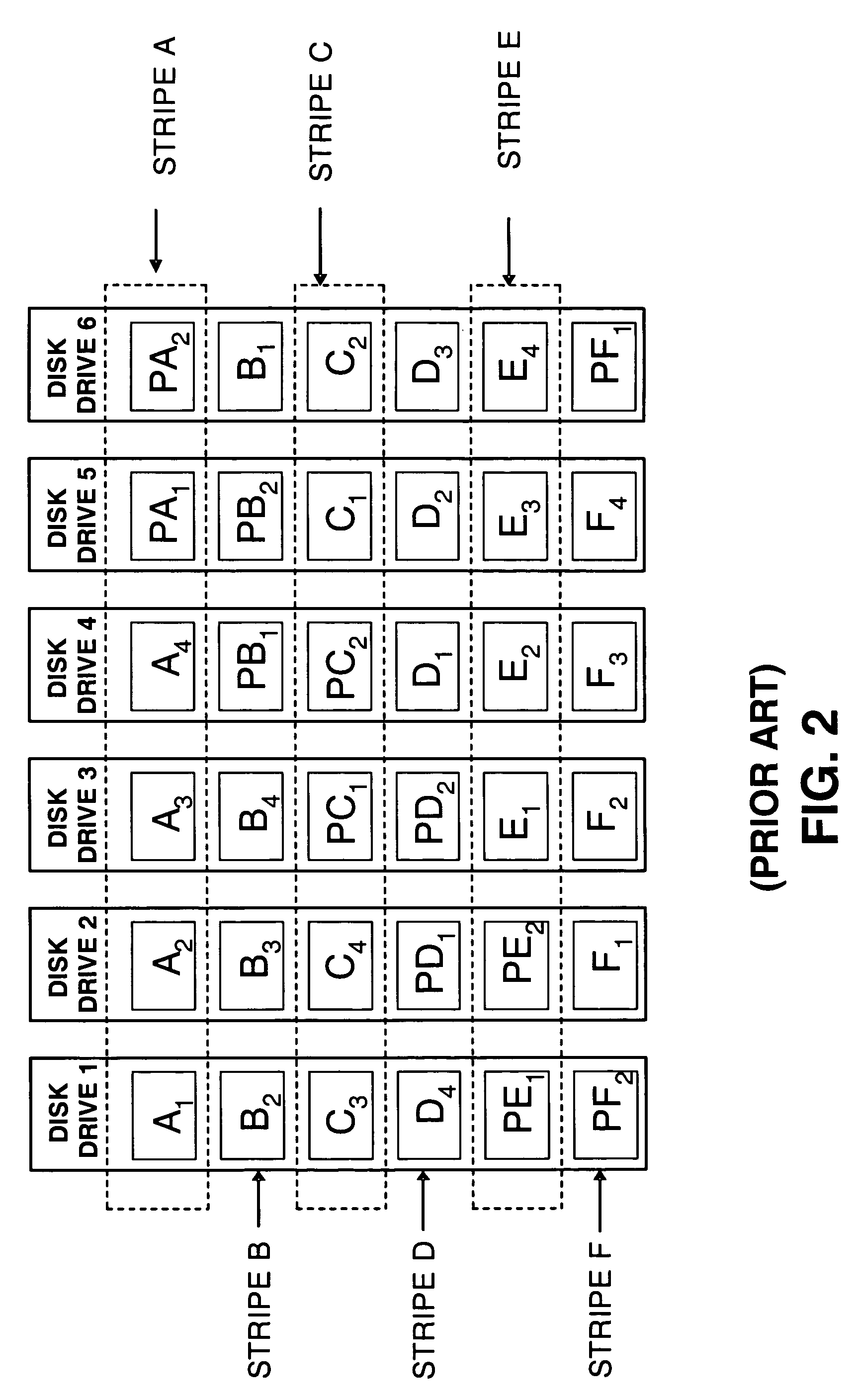System and method for improving the performance of operations requiring parity reads in a storage array system
a storage array and parity read technology, applied in the field of data storage, can solve the problem that the efficiency of the overall disk array system is small, and achieve the effect of improving the performance of the overall disk array system, small efficiency loss, and small loss of efficiency
- Summary
- Abstract
- Description
- Claims
- Application Information
AI Technical Summary
Benefits of technology
Problems solved by technology
Method used
Image
Examples
Embodiment Construction
[0020]FIG. 1 illustrates an exemplary environment (a disk drive system 100) in which the present system and associated method (system 10) for improving read performance of parity drives during a write operation in a disk array system can be used. A host computer 15 is connected to an array controller 20 of system 10. The host computer 15 stores and receives data from the system 10. The array controller 20 stores the host data, for example, on D data drives, such as: a data drive 1, 25, a data drive 2, 30, a data drive 3, 35, through a data drive D, 40 (referenced collectively as data drives 45). The array controller stores parity in, for example, P parity drives, such as: a parity drive 1, 50, a parity drive 2, 55, through a parity drive P, 60 (referenced collectively as parity drives 65).
[0021]FIG. 2 illustrates an exemplary conventional RAID data layout in which four disks in each stripe are designated as data drives and two disks in each stripe are parity drives. For example, dri...
PUM
 Login to View More
Login to View More Abstract
Description
Claims
Application Information
 Login to View More
Login to View More - R&D
- Intellectual Property
- Life Sciences
- Materials
- Tech Scout
- Unparalleled Data Quality
- Higher Quality Content
- 60% Fewer Hallucinations
Browse by: Latest US Patents, China's latest patents, Technical Efficacy Thesaurus, Application Domain, Technology Topic, Popular Technical Reports.
© 2025 PatSnap. All rights reserved.Legal|Privacy policy|Modern Slavery Act Transparency Statement|Sitemap|About US| Contact US: help@patsnap.com



